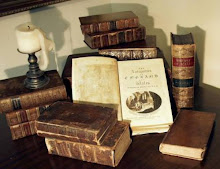This is a special notice to our Dear Readers:
Your Bibliothecary, prompted by reading The Picture of Dorian Gray, by Oscar Wilde, today revisits the subject of reality in art. Those who are weary of this discussion are permitted to skip this chapter.
Wilde believed in the philosophy of aestheticism: whether writing or painting or flower arranging, the sole purpose of art is beauty. The intrinsic value of art has nothing to do with veracity--beauty is the only truth. What fun he would have had with those in an uproar over embellishments to a memoir. (Then again, it turns out that what Frey peddled as fiction was knowingly marketed by his publisher as nonfiction, so maybe his publisher should be taken to task for the alleged fraud.)
We submit that the essence of beauty is emotional truth. An object of art--an object of beauty--moves us, stirs the emotions. Though a writer might not have served any prison sentences, his experience might have been as a prison sentence--the emotional experience is true. Our intimacy with Erato may be invented, but facts are boring, and there is no better way to convey the emotional experience of our relationship. Beauty is held accountable to no person or thing.
In Dorian Gray, the actress Sibyl Vane grapples with reality. First she believes the dramas she acts are reality. After falling in love with Dorian, she believes the dramas are nothing like reality. We are reminded of the film "Shakespeare in Love." Though Will begins writing Romeo and Ethel, the Pirate's Daughter, the play transforms after he meets Viola. Will writes the new Romeo and Juliet for the woman he loves, and together they perform their roles on stage. What is seen as drama, pure fantasy to the audience, is but reality to them. Even their experiences together become written into the drama, so that the line between fact and fiction dissolves into emotional truth.
Stand before Rodin's Balzac. Do not wonder if the likeness is exact--the sculpture is meant only to convey the emotional truth of the man. View the picture of Dorian Gray. Though the hideous disfigurements of sin are not visible in the flesh, one is witness to the true horrid experience of the man. "Vice and virtue are to the artist materials for an art."
Subscribe to:
Post Comments (Atom)


No comments:
Post a Comment